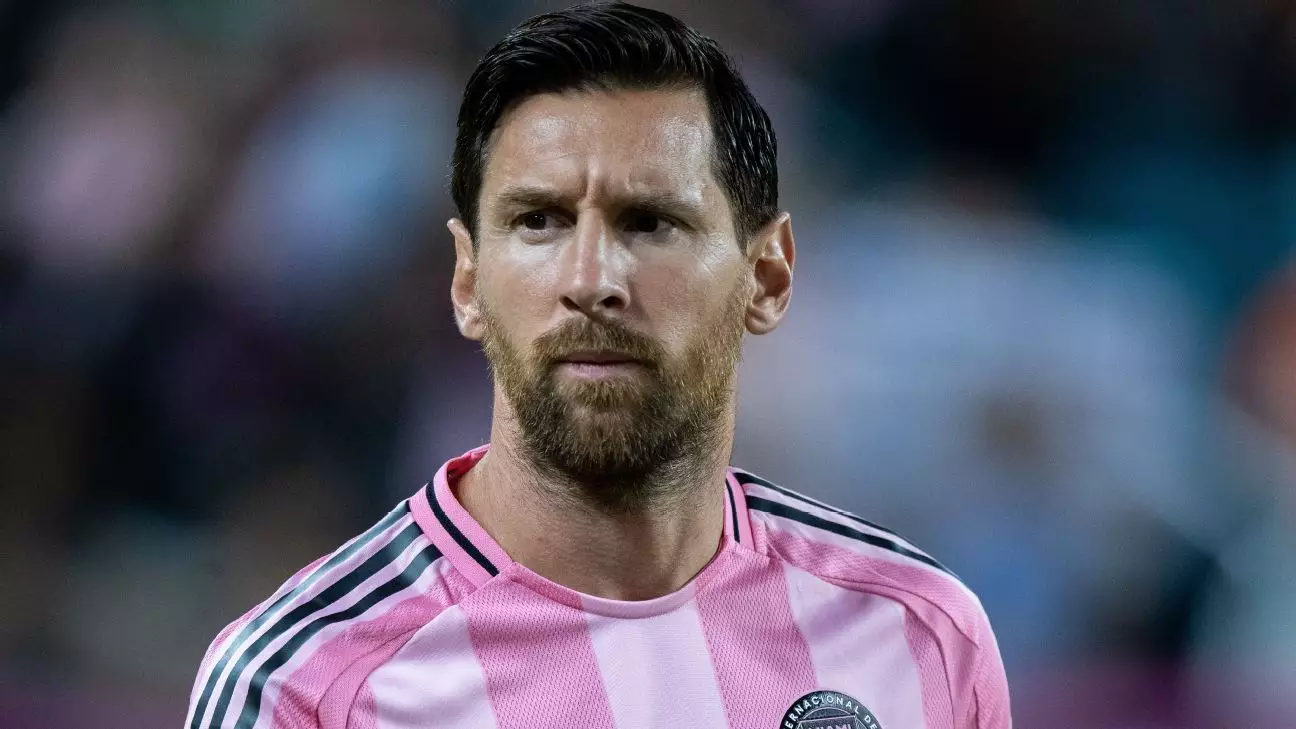In contemporary football, few phenomena underscore the sport’s evolving dynamics quite like the relentless quest to acquire marquee talent. The ongoing transfer season exemplifies not merely a strategic reshuffling but a spectacle where financial muscle and star appeal converge to redefine club identities and competitive landscapes. As Lionel Messi enters the final chapter of his contract, interest from Saudi giants like Al Ahli signals a broader shift toward embracing lucrative overseas markets. This pursuit of a legendary figure encapsulates the intriguing blend of sporting legacy and commercial ambition—where a player’s brand value can supersede the purely athletic aspects of the game.
Simultaneously, European giants remain hungry for reinforcements that can bolster their squads. Barcelona’s renewed focus on Marcus Rashford epitomizes the club’s strategic pivot—seeking a seasoned forward whose versatility and goal-scoring prowess could invigorate their attack. The move also reveals a shift in transfer priorities: from high-profile marquee signings to adaptable, known quantities capable of immediately impacting team performance.
This scene is reinforced by a flurry of negotiations and speculative deals involving players like Koni De Winter, Borna Sosa, and Noa Lang. These acquisitions are more than transactions—they reflect clubs’ calculated endeavors to sculpt their squads around young, promising talents and experienced game-changers alike. The transfer market thus becomes a complex chessboard, where every move carries long-term strategic implications.
Implications for the Power Dynamics Among Top Clubs
The transfer window also speaks volumes about the shifting hierarchy in world football. Top-tier clubs in England, such as Manchester United, continue to contend with the challenge of maintaining their competitive edge amid evolving market conditions. The potential departure of Callum Wilson and the interest in bringing Marcus Rashford back into the fold highlight United’s ongoing efforts to strike a balance between nurturing homegrown talent and acquiring proven scorers.
Contrastingly, clubs like AC Milan, Napoli, and Juventus exemplify a different approach—targeting undervalued talents. Milan’s pursuit of Hernán dez suggests a desire to nurture a mix of youthful promise and seasoned expertise, leveraging their tactical stability to reassert dominance in Serie A and Italy’s continental ambitions. Napoli’s proactive moves through the signing of Noa Lang reflect strategic investments aimed at sharpening their attack, encapsulating a broader trend where clubs increasingly identify specific roles and talents to fill narrowly defined needs.
Meanwhile, Middle Eastern clubs such as Al Hilal and Al Ahli are not merely outsiders but emerging power brokers. Their aggressive pursuit of players like Hernández and Messi underscores a willingness to outbid traditional European giants—signaling a paradigm shift where football’s financial epicenter is not solely North Atlantic anymore. Such moves will inevitably recalibrate the power balance, challenging the long-held dominance of European leagues and emphasizing the sport’s globalization.
Financial Strategies and the Commercialization of Football
Behind each transfer lies a calculated financial strategy, reflective of football’s commercial transformation. Clubs are increasingly leveraging lucrative broadcasting deals, sponsorship arrangements, and global branding initiatives to fund these high-stakes moves. For instance, Barcelona’s interest in Rashford might not only be driven by sporting necessity but also by commercial considerations, as the club seeks to reclaim its European stature and marketability.
Similarly, the massive valuation of Chelsea’s Noni Madueke at around £50 million exemplifies the inflationary trend driven by clubs’ insatiable quest for star power. These inflated valuations often raise questions about sustainability and the potential bubble that could burst if revenues stagnate or decline. Yet, clubs continue to operate in this high-stakes environment, banking on long-term gains from improved performances, sponsorships, and global fan engagement.
The rise of clubs from the Middle East and the intensification of player auctions also broadcast a new reality: football has become an arena for profound financial competition. The decision-making processes within clubs now involve intricate assessments of branding potential, revenue streams, and strategic market positioning, often overshadowing pure sporting merit. This commodification fuels an unpredictable transfer landscape—where the line between sport and business blurs, and the pursuit of glory is increasingly intertwined with the art of maximizing financial value.
The Evolution of Player Careers in the Modern Era
Finally, these sprawling transfer activities highlight how player careers have transformed under the weight of economic imperatives. Icons like Messi are not merely athletes—they are global brands, ambassadors, and bargaining chips in a high-stakes game of value creation. Their moves can redefine club fortunes and influence broader sport narratives.
Veterans like Wojciech Szczęsny choose to prolong their careers with lucrative contracts, reflecting a growing trend of longevity and financial security. Younger players, such as Francesco Camarda and Nicolas Kuhn, see international loans and transfers as vital steps in their development—an acknowledgment that in modern football, growth often involves navigating a labyrinth of strategic moves across leagues and continents.
The careers of players now oscillate between fleeting stints on the pitch and enduring brand associations. Such dynamics require athletes to adapt continually, balancing their athletic pursuits with commercial objectives, thus embodying a new kind of professionalism rooted in multifaceted value.
The current transfer season isn’t just a carnival of deals; it is a mirror reflecting the sport’s intricate blend of tradition, commerce, and evolving power dynamics. Each move is a statement—either of ambition or necessity—that collectively influences the game’s future trajectory, inspiring both awe and criticism in equal measure. Whether driven by sporting genius or business acumen, football’s relentless transformation continues to captivate a global audience hungry for the next chapter of this ever-evolving spectacle.

